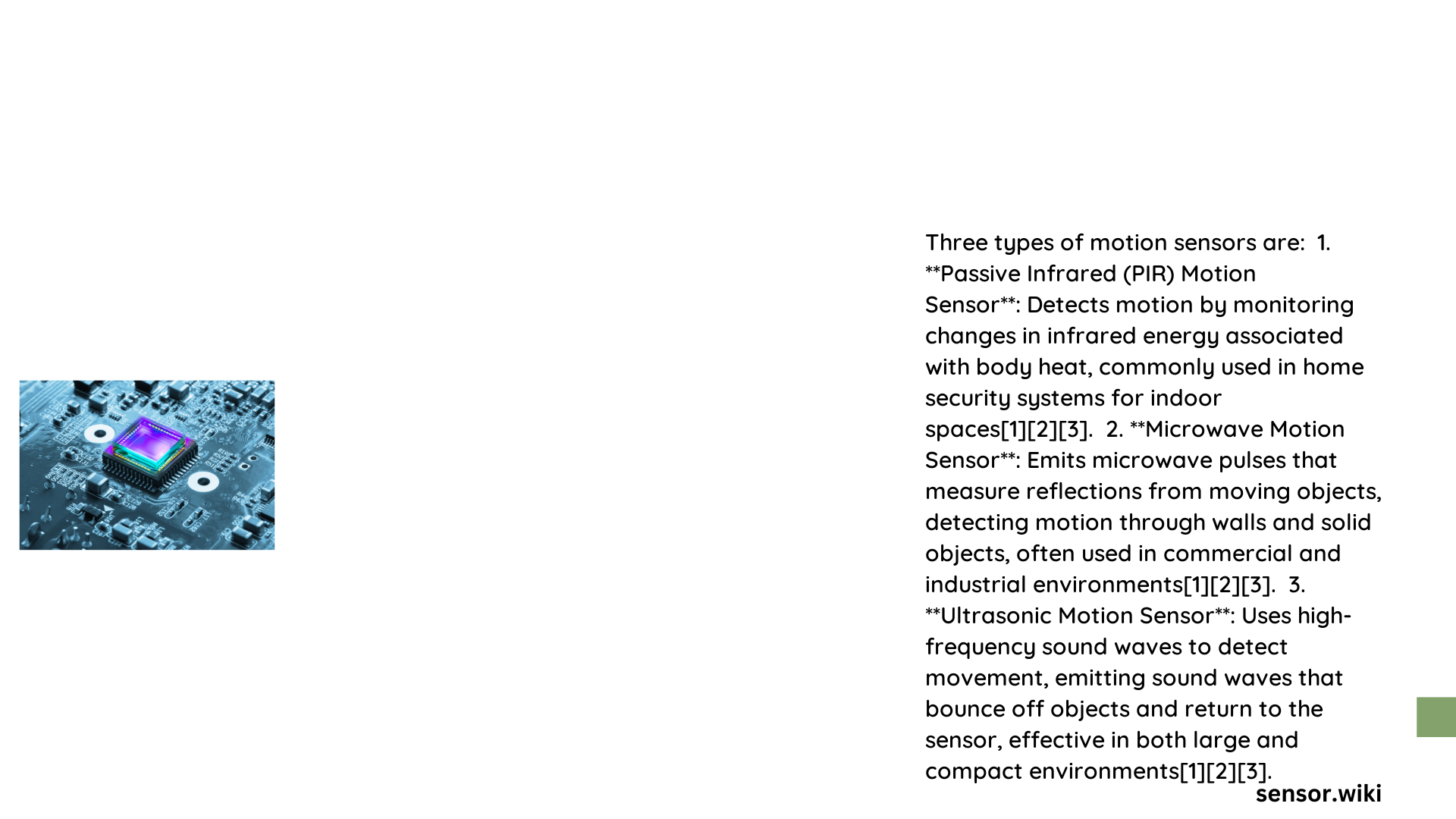Motion sensors are critical components in modern technology, enabling sophisticated detection and automation across various domains. These intelligent devices leverage different principles to identify movement, with three primary types standing out: Passive Infrared (PIR), Ultrasonic, and Microwave sensors. Each sensor type offers unique detection capabilities, ranging from infrared radiation analysis to sound wave reflection and microwave signal interpretation, providing versatile solutions for security, automation, and environmental monitoring applications.
What Are the Core Principles of Motion Sensor Detection?
How Do Passive Infrared (PIR) Sensors Work?
Passive Infrared (PIR) sensors detect movement by monitoring infrared radiation emitted by objects within their detection range. These sensors function by:
- Measuring temperature variations
- Identifying sudden changes in infrared energy
- Triggering responses when significant thermal differences occur
PIR Sensor Characteristics
| Parameter | Specification |
|---|---|
| Detection Range | 3-30 meters |
| Response Time | 100-200 milliseconds |
| Power Consumption | 0.8-1.0 watts |
| Operating Temperature | Up to 35°C |
What Makes Ultrasonic Motion Sensors Unique?
Ultrasonic motion sensors utilize high-frequency sound waves to detect movement and spatial changes. Key features include:
- Emission of sound waves beyond human hearing range
- Measuring reflection and time delay of returned signals
- Providing precise distance and movement detection
Ultrasonic Sensor Performance Metrics
- Detection Range: Up to 30 meters
- Response Speed: 10-50 milliseconds
- Suitable for complex environmental monitoring
How Do Microwave Motion Sensors Detect Movement?
Microwave sensors employ electromagnetic waves to identify motion through the Doppler principle. Their distinctive characteristics include:
- Ability to penetrate non-metallic materials
- Continuous wave emission and reflection analysis
- Extremely rapid response times
Microwave Sensor Technical Specifications
| Feature | Details |
|---|---|
| Detection Method | Doppler signal analysis |
| Response Time | Less than a microsecond |
| Power Consumption | 1.1-1.5 watts |
| Temperature Tolerance | -20°C to 45°C |
What Are Practical Applications of Motion Sensors?

Arduino Project Implementation Examples
PIR Sensor Security System
const int pirPin = 2;
const int relayPin = 13;
void setup() {
pinMode(pirPin, INPUT);
pinMode(relayPin, OUTPUT);
}
void loop() {
int pirState = digitalRead(pirPin);
digitalWrite(relayPin, pirState == HIGH ? HIGH : LOW);
delay(100);
}
Ultrasonic Occupancy Detection
const int trigPin = 9;
const int echoPin = 10;
const int relayPin = 13;
void loop() {
long distance = calculateDistance(trigPin, echoPin);
digitalWrite(relayPin, distance < 200 ? HIGH : LOW);
}
What Challenges Do Motion Sensors Face?
Comparative Challenges
- PIR Sensors:
- Sensitive to temperature fluctuations
- Require direct line-of-sight
-
Cost-effective ($5-$20)
-
Ultrasonic Sensors:
- Affected by sound-reflecting surfaces
- Moderate environmental interference
-
Moderate pricing ($10-$30)
-
Microwave Sensors:
- Higher false alarm potential
- Susceptible to electronic interference
- Most expensive option ($20-$50)
Conclusion
Understanding the nuanced capabilities of three types of motion sensors empowers engineers and developers to select optimal detection technologies for specific applications.
